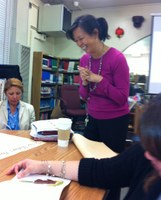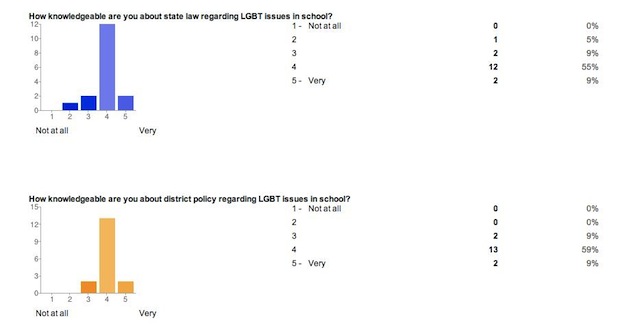PLI Leadership Project

Research from GLSEN found that one of the factors that ameliorates the negative experiences of LGBT students is an LGBT-inclusive curriculum. Though the positive effects are clear, very few teachers are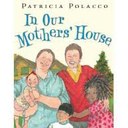 prepared or given resources to increase inclusivity. Despite the recent passage of the California Fair,Accurate, Inclusive, and Respectful Education Act and the Los Angeles Unified School District resolution affirming the state law, as well as its commitment to promoting LGBT-inclusivity, there has been little movement on the part of elementary schools to rectify this situation. By providing professional development for teachers, I hoped to move our school to becoming a more inclusive community, thereby protecting our students.
prepared or given resources to increase inclusivity. Despite the recent passage of the California Fair,Accurate, Inclusive, and Respectful Education Act and the Los Angeles Unified School District resolution affirming the state law, as well as its commitment to promoting LGBT-inclusivity, there has been little movement on the part of elementary schools to rectify this situation. By providing professional development for teachers, I hoped to move our school to becoming a more inclusive community, thereby protecting our students.
To carry out my project, it was critical that I collaborate with the teachers and our school site administrator. My first task was to make a proposal to our administrator and Academic Action Team so that I would be allowed time during our professional development sessions to make my presentations. Once my project was approved, I took on the role of an instructional leader by facilitating three professional development sessions. I used data that I collected in order to determine the focus of each session. I also met with the Program Director of the Human Relations, Diversity, and Equity Office for our district, LAUSD, so that I could find appropriate resources for our staff, as well as help with planning and developing each of my sessions.
The topics for each of my sessions were as follows:
Session 1: State laws and district policy regarding LGBT anti-bullying and student safeguarding
Session 2: Age-appropriate discussions and lessons regarding LGBT issues
Session 3: LGBT-inclusive literature and addressing parent concerns
When planning my sessions, I took into consideration research around adult learning. I made the material relevant by showing important data and sharing counter-stories in the form of an “It Gets Better” video made by gay employees of Pixar. I also allowed for time for teachers to collaborate and discuss with each other during the sessions.
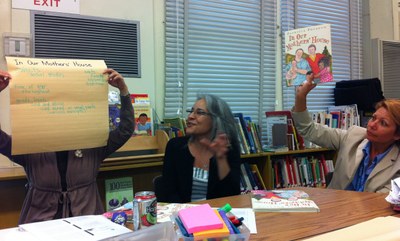
My plans for my leadership project did not change much from its inception. Using the data I collected and a review of some of the literature around my problem, it was clear that the professional development sessions I planned were needed and appropriate. However, one change occurred because of the sudden availability of resources made by a donor to the school. Our intervention coordinator was able to garner funds to purchase LGBT-inclusive books for the classrooms. We worked together to purchase three sets of books that could be shared by grade levels. For my session regarding LGBT-inclusive literature I was able to use books that teachers would have immediate access to rather than just titles of books.
In order to find out more about my problem, I initially collected four types of data: 1) teacher surveys; 2) student discussion input; 3) informal poll of elementary principals; and 4) number of district-offered courses for elementary teachers.
I surveyed nine teachers and two administrators that I knew would be willing to fill out a survey and be supportive of my project, to find out about the prevalence of bullying or problems involving LGBT issues at our school site, staff comfort level with dealing with LGBT issues, and what the perceived challenges are when dealing with LGBT issues in the elementary school setting. Of the eleven people surveyed, nine people responded. All of them except one reported having dealt with LGBT issues at school or in the classroom. Most of the issues involved the use of the word "gay" as a derogatory term or teasing because of behaviors that students perceived as being the wrong gender, i.e. a boy acting like a girl. In one instance, a teacher had a student who has two mothers, but he or she did not elaborate on how it was an issue.
Discussion in my fifth grade classroom also revealed that all of the students in class had heard the phrase "you're gay" or "that's gay" at least once on campus. Many reported it as a regular occurrence on the playground. Some of the students shared that they had heard the phrase as early as kindergarten. Coupled with the prevalence reported by the teachers this data, this is clearly an issue that needed to be dealt with.

Students Response to LGBT-Inclusive Literature
The other data I collected though, revealed that teachers have not been supported with ways to deal with this important issue. When I polled a group of three elementary school principals regarding the training or information they were given to disseminate to teachers about either the California state law SB48 or the LAUSD "LGBT and Sexual Orientation Anti-bullying Resolution", all three of them vaguely recalled receiving a district memorandum about it. (They were not sure which one.) None of them remembered any action related to the memo, nor did they share the information with the teachers. Additionally, I logged onto the district website for professional development courses that are being offered and there are no classes in any format being offered at the time.
Prior to delivering my professional development sessions, I created a survey to get some baseline data from the teaching and administrative staff. I sent the survey to all teachers and administrative staff members using Google Forms and made the survey available in hard copy form as well. Of the 30 surveys I sent out, I received responses from 18 staff members. The data showed that knowledge about state laws and district policies were nearly evenly distributed on a scale of one to five with one being not at all knowledgeable and five being very knowledgeable. In regards to comfort with dealing with LGBT issues and including LGBT characters into curriculum, the data was again fairly evenly distributed from not at all to very.
After all three professional development were complete, I again surveyed the teachers and administrative staff using Google Forms and hard copies for those who preferred using paper and pencil. For this survey, I did not include our Assistant Principal since he did not participate in any of the professional development sessions. Of the 29 surveys I sent out I received 22 responses. The data showed a great increase in knowledge about state laws and district policies. There was only one respondent who rated their knowledge at a two on a scale of one to five. All other respondents rated themselves at a three or higher with the majority rating their knowledge at four or higher. Most importantly, though, there was an important increase in the comfort level of teachers and administrative staff with dealing with LGBT issues and including LGBT characters into the curriculum. Only two respondents rated themselves at a level 2 on a scale of one to five. All other respondents rated themselves at a level of three or higher. In contrast to 26% reporting that they were very comfortable prior to my sessions, 41% reported feeling very comfortable at the end of the sessions.
In addition to the numerical data, I collected qualitative data in my surveys as well. This is a sample of the responses I received:
“In the past, I felt that presenting LGBT issues or opening discussions about these issues in my classroom was mainly a way of promoting tolerance and acceptance. I now feel that incorporating an LGBT inclusive curriculum is necessary to promote equality. I also feel that I can easily incorporate LGBT friendly literature as part of my regular curriculum.”
“It has given my ideas on how to teach tolerance of LGBT students that I wasn't aware of before. it also gave me the confidence to address the derogatory language and put down students use that is associated with the LGBT community.”
“It's beautiful, powerful and much needed! My goal is to begin using the books along with the grade level curriculum, inbed [sic] it, and front load it! So sorry I haven't used it before! Didn't realize I could.”
“This issue is not about taking a "pro gay" position with our students but rather this is a pro tolerance issue and raising awareness that we should be inclusive towards all people.”
Considering both the positive quantitative and qualitative data, I believe that my short-term goals of increasing awareness and knowledge of state and district expectations regarding LGBT curriculum and increasing teacher comfort level when dealing with LGBT issues in the classroom were met. The anecdotal evidence also confirms my analysis of the root causes. Teachers were not including LGBT-inclusive literature in their classrooms, nor addressing LGBT issues openly because they had not received training in this area.
While I feel that my plan was successful as implemented, there are some elements I would revise that may have made it more impactful. One of those elements is time. I would have requested more time in 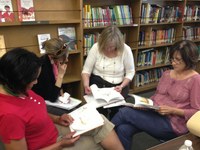 my proposal to carry out each professional development. For the most part I felt that time was cut short for discussion of this important topic. Additionally, for my second presentation when we looked at classroom examples, I would include more time for collaboration amongst teachers to plan lessons or discussion ideas. To reinforce the learning after each session, I would ask that teachers make a “48 hour” goal--something they can do within the next two days. Finally, another change I would make is the kind of data I collected. I would collect data from students to see if the project impacted their behaviors and attitudes. I would also collect data on the teachers’ use of the LGBT-inclusive books or any lessons or discussions they had in their classrooms.
my proposal to carry out each professional development. For the most part I felt that time was cut short for discussion of this important topic. Additionally, for my second presentation when we looked at classroom examples, I would include more time for collaboration amongst teachers to plan lessons or discussion ideas. To reinforce the learning after each session, I would ask that teachers make a “48 hour” goal--something they can do within the next two days. Finally, another change I would make is the kind of data I collected. I would collect data from students to see if the project impacted their behaviors and attitudes. I would also collect data on the teachers’ use of the LGBT-inclusive books or any lessons or discussions they had in their classrooms.
Even though there was a great deal of growth in the area of LGBT-inclusivity, my project has only addressed the tip of the iceberg. Now that there is a greater comfort level among most teachers, the next step would be to incorporate LGBT-friendly curriculum into the core curriculum regularly. Also, open discussions about LGBT issues should be included in areas such as Second Step, a social skills program. In the long-term these actions would foster a culture of inclusivity which would in turn reduceanti-LGBT bullying and bullying in general. Although I will not be teaching at my current school, I am hopeful that the dialogue will continue. This is a project that I envision bringing to my new school site, as well.
discussions about LGBT issues should be included in areas such as Second Step, a social skills program. In the long-term these actions would foster a culture of inclusivity which would in turn reduceanti-LGBT bullying and bullying in general. Although I will not be teaching at my current school, I am hopeful that the dialogue will continue. This is a project that I envision bringing to my new school site, as well.
This project helped grow as a leader in a number of ways. Speaking in front of adults has always been a challenge for me, but presenting about LGBT issues helped me to develop more confidence and skills in this area. It also helped me to be more effective in applying the concepts of andragogy, or adult learning. I also had to develop diplomacy skills. Throughout my project I was challenged by some staff members who did not agree with what I was doing. They directly challenged me while I was presenting, as well as privately. Even though I feel very strongly about the importance of my project and how it addresses marginality, it was necessary for me to refrain from reacting emotionally. As my administrator advised me, in a case like this, we need to “let the policies speak for themselves.” Another way in which this project helped me grow was by stretching me outside the comfort of the school site. To be successful I needed to reach out and meet with district personnel which is not something I had done before. Previously, I relied on my principal to find district resources. Finally, this project demanded that I manage a variety of components simultaneously: scheduling my own time; working with school schedules; and distributing resources. These are experiences and skills that will help me in future leadership roles.
